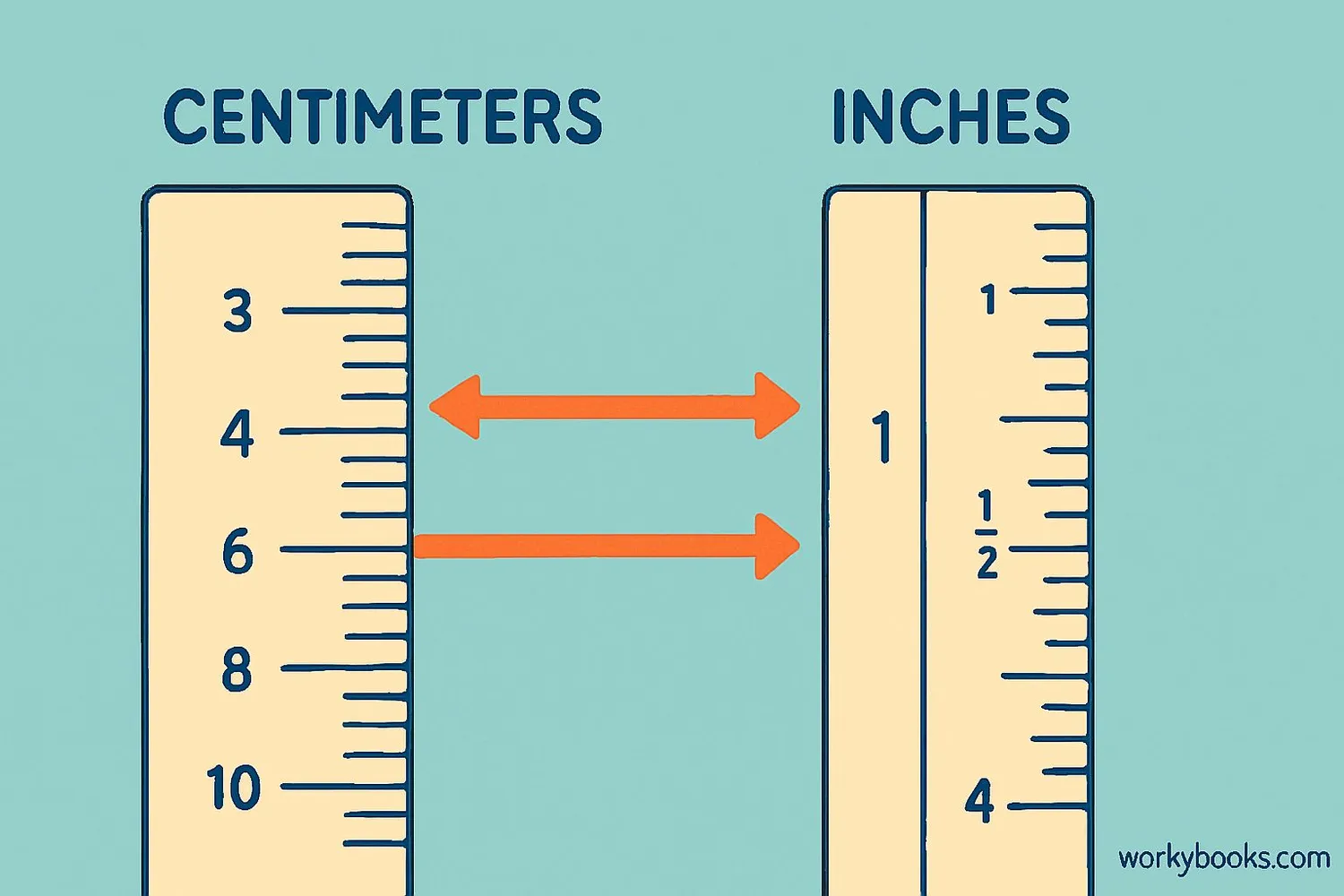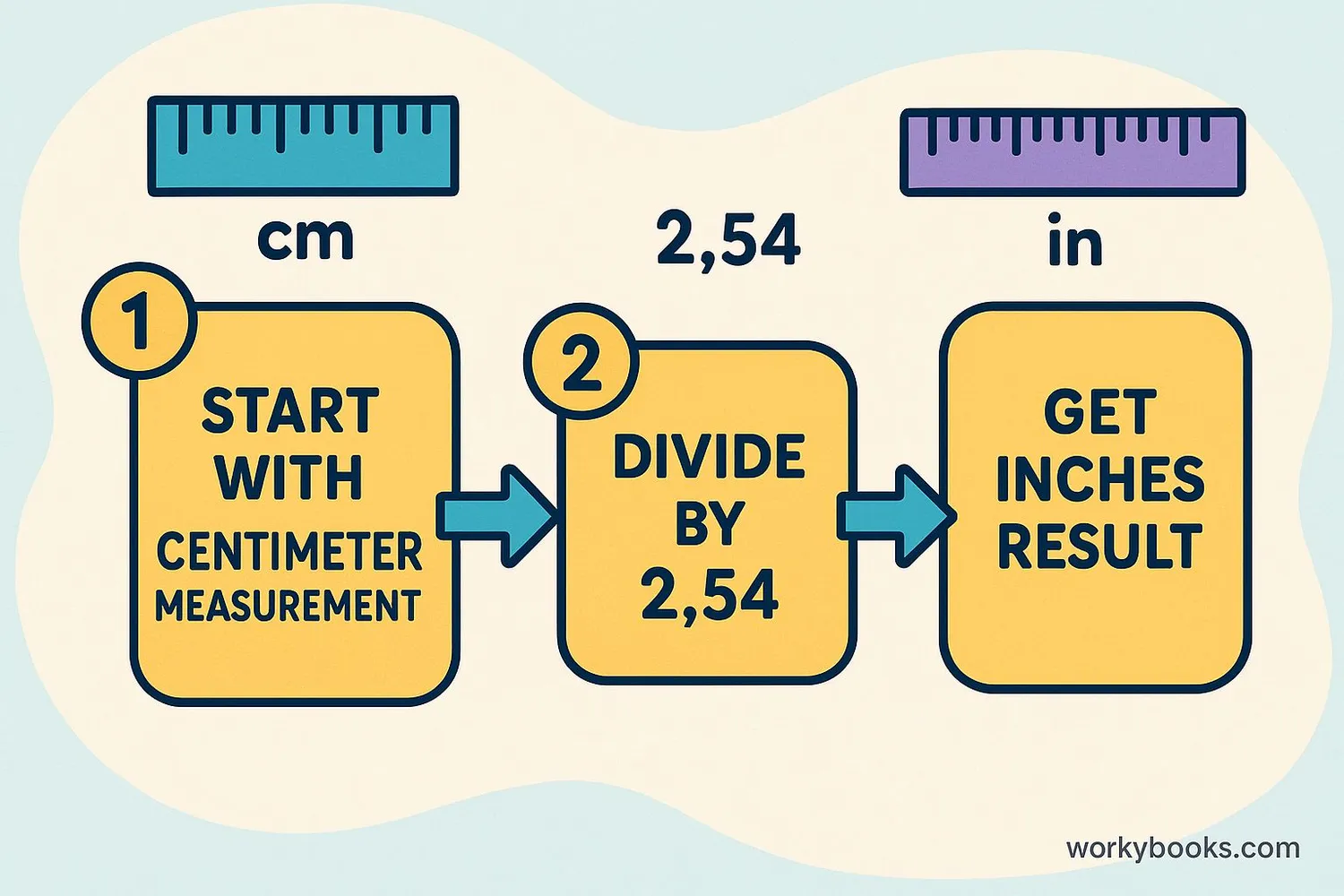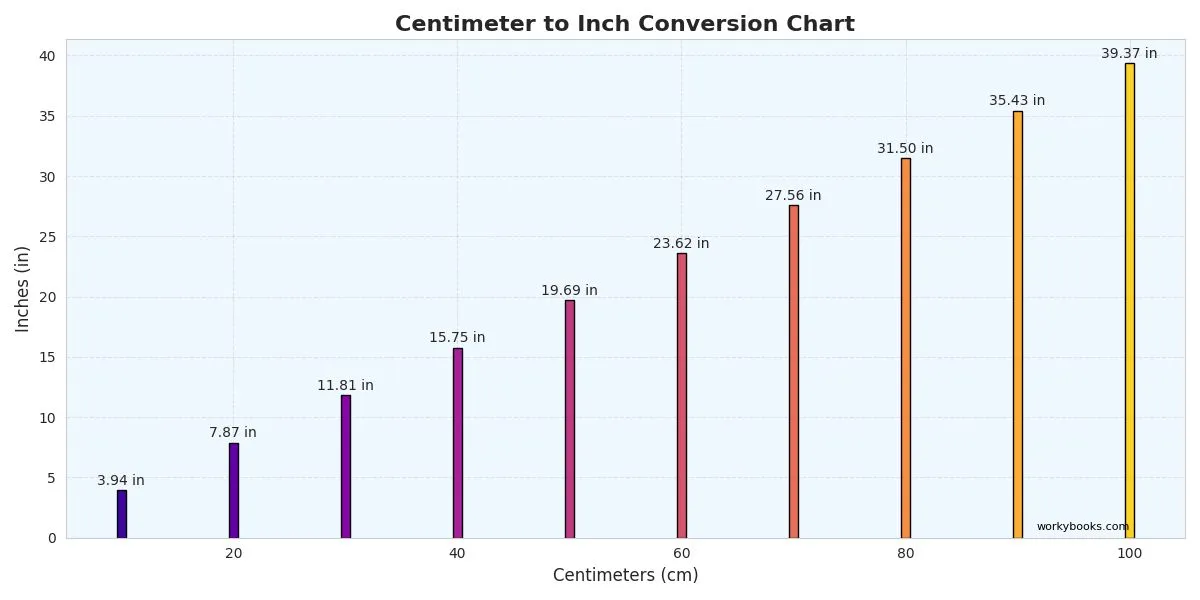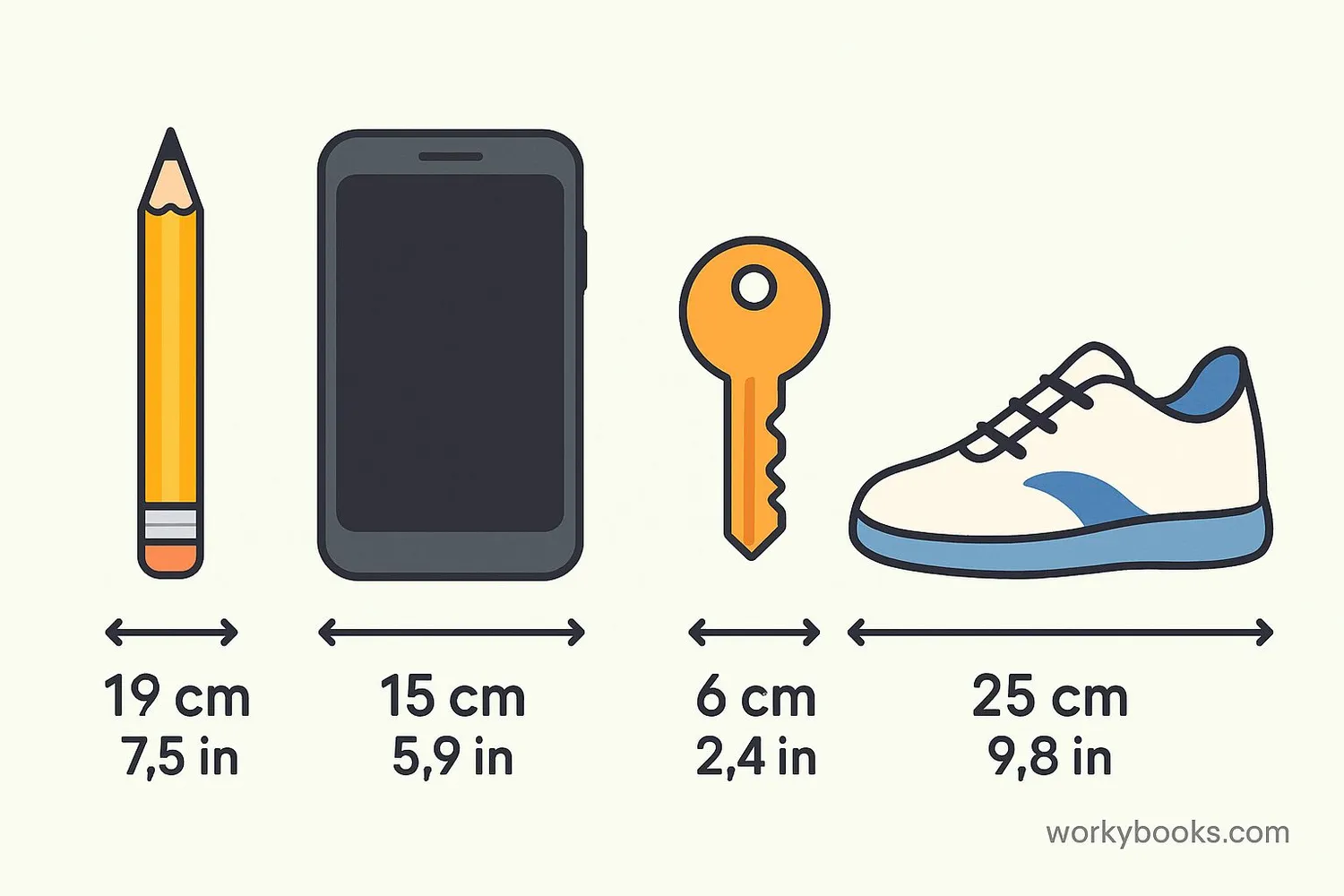Centimeters to Inches (cm to in) - Definition, Examples, Quiz, FAQ, Trivia
Learn to convert between metric and imperial length measurements with easy explanations and practice activities
What is Length Conversion?

Length conversion means changing a measurement from one unit to another. In this lesson, we're learning how to convert between centimeters (used in the metric system) and inches (used in the imperial system).
Why do we need to convert? Different countries use different measurement systems. Most countries use centimeters and meters, while the United States primarily uses inches and feet. Scientists also use metric measurements for consistency.
One inch equals 2.54 centimeters. To convert centimeters to inches, we divide the number of centimeters by 2.54. Understanding this relationship helps us compare measurements and solve real-world problems.
Key Concept
1 inch = 2.54 centimeters. This relationship is the foundation for all cm-to-inches conversions.
How to Convert Centimeters to Inches

Converting centimeters to inches is simple once you remember the conversion factor:
Conversion Formula
To convert any measurement in centimeters to inches, divide the number of centimeters by 2.54.
Example: Convert 15.24 centimeters to inches
Step 1: Start with the measurement in centimeters → 15.24 cm
Step 2: Divide by 2.54 → 15.24 ÷ 2.54
Step 3: Calculate the result → 6 inches
So 15.24 centimeters equals 6 inches. Easy, right?
Remember
When converting centimeters to inches, your answer will be a smaller number because inches are larger units than centimeters.
Centimeters to Inches Conversion Charts

Conversion charts help us quickly find equivalent measurements without calculating each time. Here are two useful charts for converting centimeters to inches:
Centimeters to Inches Conversion Chart
| Centimeters (cm) | Inches (in) |
|---|---|
| 1 cm | 0.39 in |
| 5 cm | 1.97 in |
| 10 cm | 3.94 in |
| 15 cm | 5.91 in |
| 20 cm | 7.87 in |
| 25 cm | 9.84 in |
| 30 cm | 11.81 in |
| 40 cm | 15.75 in |
| 50 cm | 19.69 in |
| 100 cm | 39.37 in |
Common Object Conversion Chart
| Object | Centimeters | Inches |
|---|---|---|
| Standard Pencil | 19 cm | 7.5 in |
| Sheet of Paper | 29.7 cm | 11.7 in |
| Ruler | 30 cm | 12 in |
| Tablet Screen | 25.4 cm | 10 in |
| Soccer Ball | 22 cm | 8.7 in |
Chart Tip
Notice how each additional 2.54 centimeters adds one inch? You can use this pattern to estimate conversions!
Real-World Examples

Let's practice conversion with some real-world examples:
Example 1: A pencil is 19 centimeters long. How long is it in inches?
Solution: 19 ÷ 2.54 ≈ 7.48 inches (about 7.5 inches)
Example 2: A smartphone is 15 centimeters tall. What is this height in inches?
Solution: 15 ÷ 2.54 ≈ 5.91 inches (about 6 inches)
Example 3: A notebook is 9 inches wide. Convert this to centimeters.
Solution: To convert inches to centimeters, multiply by 2.54: 9 × 2.54 ≈ 22.86 cm
Example 4: Sarah's height is 142 centimeters. Convert her height to inches.
Solution: 142 ÷ 2.54 ≈ 55.91 inches (which is 4 feet 7.91 inches)
Practice converting measurements you see around you - the length of your book, the width of your desk, or the height of your water bottle!
Conversion Tip
To convert inches back to centimeters, multiply by 2.54 instead of dividing.
Conversion Practice Quiz
Test your conversion skills with this 5-question quiz. Choose the correct answer for each question.
Frequently Asked Questions
Here are answers to common questions about centimeters and inches conversion:
Measurement Trivia
Discover interesting facts about measurement systems:
Origin of the Inch
The inch was originally based on the width of a man's thumb. King Edward II of England declared in the 14th century that 1 inch equals 3 grains of barley placed end to end.
Global Standard
The metric system is used by over 95% of the world's population. Only three countries (United States, Liberia, and Myanmar) have not officially adopted the metric system as their primary system.
Space Measurement
NASA uses metric measurements for all its space missions. The Mars Climate Orbiter was lost in 1999 because one engineering team used metric units while another used imperial units for calculations.
Smallest Measurement
The smallest unit of measurement scientists use is called a "Planck length" - about 1.6 × 10⁻³⁵ cm. This is so small that comparing it to a centimeter is like comparing a centimeter to the entire observable universe!





